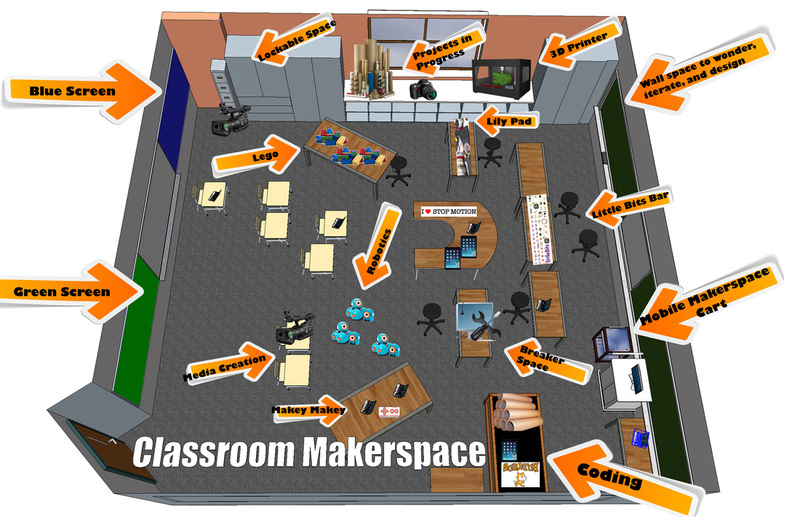e-Learning Ecologies MOOC’s Updates
Makerspaces: Revival of Constructivism in the age of E-learning
A makerspace is constructivism in practice.
Constructivism is the devotion to nurturing learners as they build something. Often real learning happens through observation and experience. The emphasis is on the experience portion as there is likely to be an emotional journey and physical connection a learner has with whatever they construct. Another equally important element of constructivism is the attention given to identifying the purpose of what a learner is building. It is hard to disagree with Michelle Thompson’s opinion that learners are more actively engaged when they understand the purpose and application behind a lesson/project versus when they are instructed to learn something for the sake of doing well on an assessment. This also further reiterates the point Dr. Bill Cope makes about memorization no longer being the focus of educational assessment or method of learning due to growing access to the internet. Instead, education should now focus on internalized learning opportunities through producing a representation or composition of compiled knowledge.
In a makerspace, the literal use of “hands-on” learning is more than just typing, finger writing, swiping, and tapping. In a space with access to electronic educational modules like Stemboard by Lingo, Simple Machines by Lego, 3-D printers, woodshop machinery, video cameras, and art and craft supplies, a learner has the opportunity to use fine motor skills to produce a personal or shared project and also pick and choose tools best fit for their project.
In a makerspace, there is much more room for trial, error and discovery which are sure to teach some lessons about resilience and methods of problem solving and creativity. Also as important is the collaborative space that is afforded. With a lab of tools at learners’ disposal in an open floor plan, there is more visibility on opportunities for exchange of knowledge, ideas and shared curiosity.
Perhaps one of the most important lessons that teachers and students alike can gain from a makerspace environment is that play should not be considered a separate process from learning but a crucial part of it.
Resources
TEDx Talks. "Education Reimagined Through Constructivism | Michelle Thompson | TEDxBethanyGlobalUniversity." YouTube, 28 June 2019 https://youtu.be/XVMyHt5ULUA
Education at Illinois. "e-Learning Affordance 2c: Active Knowledge Making." YouTube, 17 Jun 2014 https://youtu.be/j6uJ47ktWk4
Roffey, T., 2020. Why Makerspace?. [online] Makerspace for Education. Available at: <http://www.makerspaceforeducation.com/why-makerspace.html> [Accessed 11 October 2020].



ok
Your blog has a way of making even the most challenging topics feel accessible. You take the time to break things down in a people playground way that’s clear and concise, and it’s a refreshing experience. I love that I can always count on your posts to be both informative and enjoyable to read. Thank you for sharing your expertise with such care!
Advanced half body sexdoll include layers of materials that simulate muscle and fat, providing a more realistic texture and movement. For example, a combination of softer TPE or silicone over a firmer inner layer can mimic the feel of muscles under the skin.
I am very enjoyed this blog. It's an informative topic. It helps me very much to solve some problems.
free games
Could we call it, learning by making? I wonder.
I am not sure how focused learning can happen in a Maker's Space. What I mean by focused learning is learning that is meant to fulfill some sort of syllabus or set of standards.
Of course, you want there to be enough openendedness to ensure that students have room to explore, design, iterate, and succeed. At the same time, there are also things the students must come away with. Tricky to control and not control at the same time.
I am thinking that there must be design or production goals set to guide student activity. For example, stipulating that output should be a device that has positive social impact for a low cost are some general goals. Clearly things need to be a bit more specific. Another way might be to control what tools and materials are available to students in the space. I think about those robotics warfare competitions in which the teams are all given the same set of materials and all share the goal of having building a robot that will win over another in combat.
But let's say we have specific curricular objectives in math, science, and social science that need to be reached. Or would something like that not be appropriate for makerspaces.